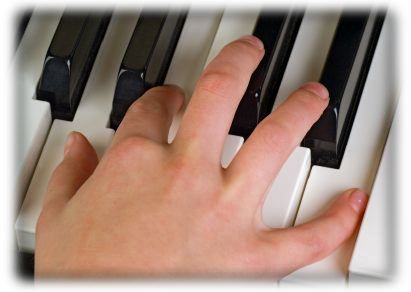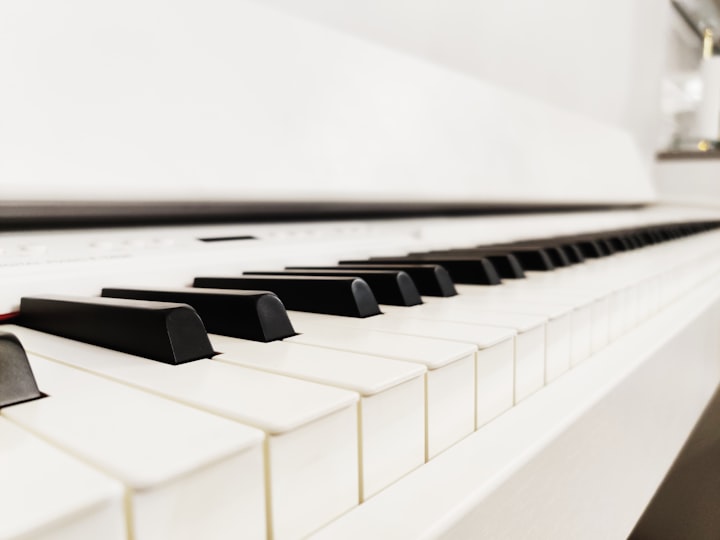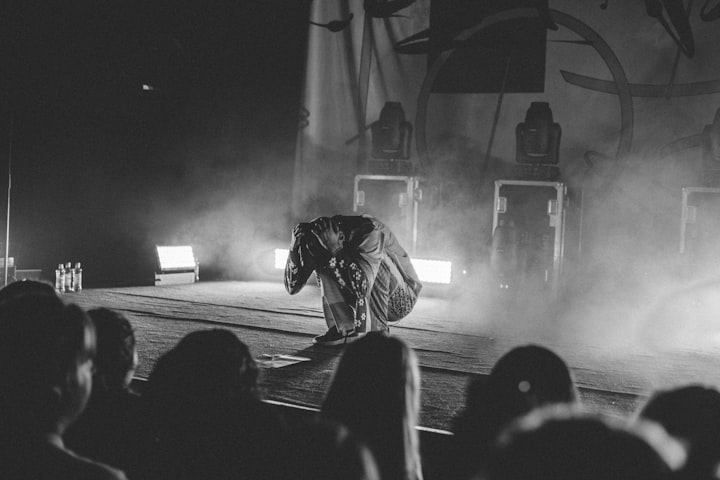Piano Basics: A Short Beginner's Guide to the Keyboard
Let's learn some easy piano basics and start playing piano!
Don't let that piano intimidate you. Those keys might look like teeth, but your piano doesn't bite!
It's really not that complicated.
Have a seat at the piano and let's work through a beginner lesson together.
The 88 Keys
The beginning of our lesson: a piano has 88 keys. Simple, eh? :-)
(If you're using a keyboard, it will usually have less. That's OK.)
If you just play around pressing keys, you'll notice keys to the left get progressively lower, while keys to the right get higher and higher.
Repeat to yourself: left is low, right is high.

Black & White
You'll notice a pattern as you look at the keys on a piano.
There are black keys and white keys. Look a little closer, and you'll see that the black keys are in groups -- groups of two, and groups of three.
Practice playing just the groups of two going up and down the keyboard, then do the same with the groups of three. You can press all the keys down at the same time, or play them individually. It doesn't matter. What you're doing is getting your eyes and hands familiar with the layout of the keyboard.
Now you're ready to play your first song. It's easy, I promise! Play any black keys, alone or together. Use your left and right hands, or just one hand at a time. Just doodle around. Soon you'll find a pattern you like - repeat it. Doodle some more!
Congratulations - you're now a composer! :-) I told you it was easy!
A to G
Now, on to the white keys.
Our next step in piano basics is to learn the music alphabet. The music alphabet goes from A to G. Then we start over. A - B - C - D - E - F - G - A - B - C... you get the idea.
The lowest key on a piano is A. The highest is C. You can get to know each of the others by walking up the keyboard saying the letter names out loud.
I have all my beginning students do this! Take the pointer finger of your right hand and press the lowest key, and say "A" out loud. Then press the next white key and say "B." Continue on up the keyboard.
Notice that all the letters always show up in the same positions on the keyboard. For instance, C is always directly to the left of the group of two black keys. F is always to the left of the group of three black keys. You can practice finding all the C's, all the D's, and so on.
Do this every day, and you'll be well on your way to knowing your piano keyboard like an old friend!
5 Fingers
Each of your hands has five fingers. We have names for them: thumb, pointer finger, middle finger, ring finger, and pinky. In piano, though, we give our fingers numbers:
thumb = 1
pointer = 2
middle = 3
ring = 4
pinky = 5
Practice saying each of your finger numbers out loud, while pressing your fingers on your lap or a table. Or even on piano keys! Taking the time to learn your finger numbers will help you no matter what piano method or online course you use.
Basic Hand Position
Let's find middle C on your piano. Almost directly in the middle of your piano keyboard you'll find a group of two black keys. Usually it's right underneath the name on your piano. Directly to the left of that group of two black keys is a white key -- middle C.
Put your RH 1 finger (thumb) on middle C. Now put each of the rest of your fingers on a white key.
Now find the next C lower (to the left). Just look down from your right hand until you see the next group of two black keys. Again, directly to the left is your C. This time, take your LH 5 finger (pinky) and put in on C. Put each of your remaining fingers on the next white key. Your hands are now in C position!
Experiment with:
- walking up and down your fingers
- skipping around your fingers
- saying a finger number out loud and playing it
- playing notes with both hands
- playing more than one note with the same hand (your first chords!)
Just like you did with the black keys, you can now doodle around with your hands in this position and make up a song. Just give yourself permission to goof around!! There is no "bad" or "wrong." You're just playing, experimenting, and learning.
Enjoy yourself!
You're on your way!
You're playing piano! Yes, this does count. Piano basics are stepping stones to more advanced piano playing.
This process of discovering the piano on your own, and creating music for yourself, is so valuable. In fact, many musicians started exactly this way!




Comments ()